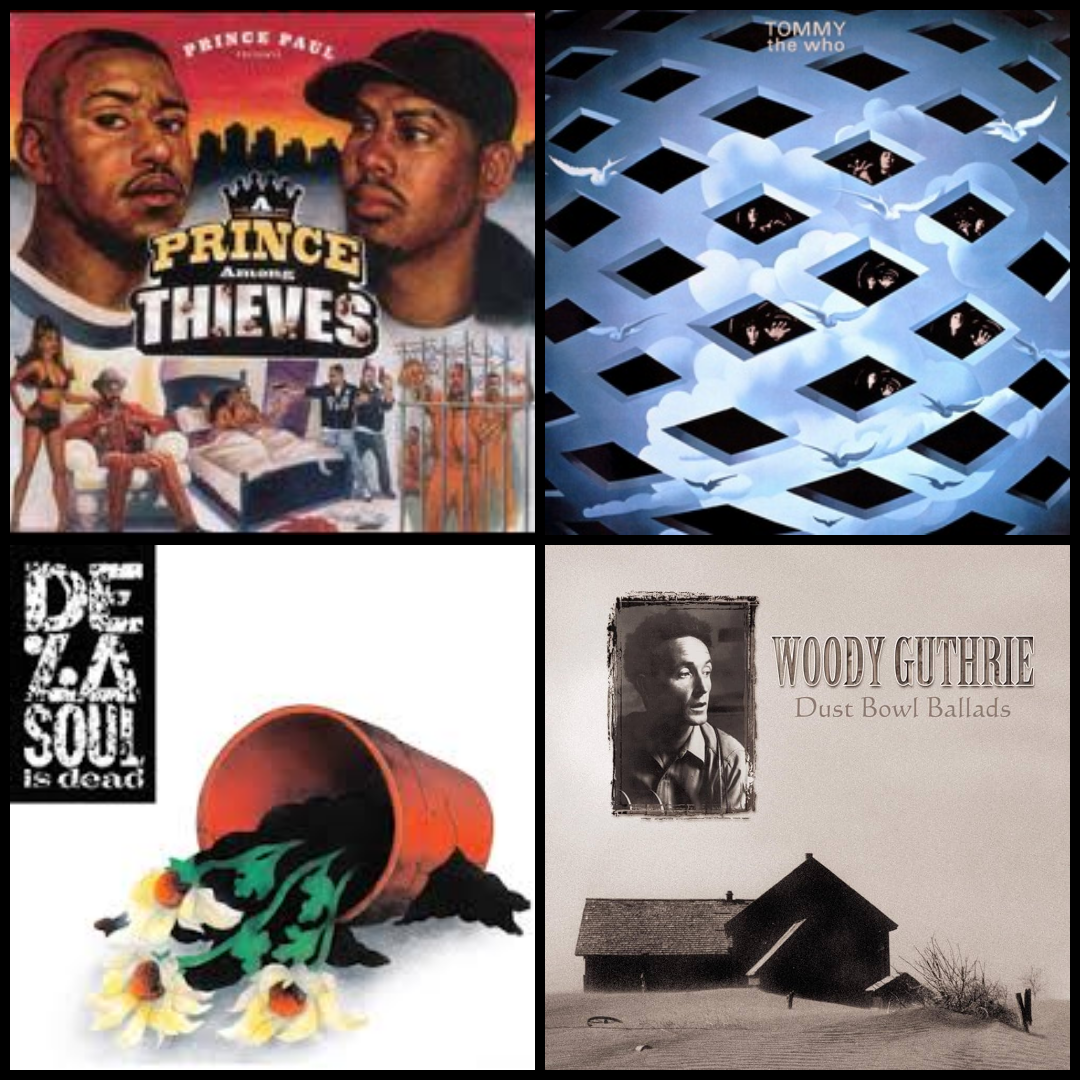A concept album can be loosely defined as an album that follows a central narrative or theme. I say loosely because there is no strict consensus on what qualifies as a concept album, but generally the criteria are based on an album’s ability to uniformly achieve its narrative. In a concept album, the album as a whole often means something different than the individual songs. The album is made to work together and the songs build on one another, adding context or closure to problems brought up in previous songs.
The first concept album is widely cited to be “Dust Bowl Ballads” by Woody Guthrie. The album chronicles the Dust Bowl era of The Great Depression. Some of the songs are Guthrie embodying a character, while others are him reporting on the situation from outside. The central story throughout is of the mass migration of people from the region affected by the Dust Bowl to California.
Since the release of this album in 1940, the concept album has grown and changed a lot.
Rock
From the general term concept album came the punchier term rock opera. The first item to identify with this label is “Tommy” by The Who. While previous concept albums left room for looser associations and a more vague story, “Tommy” was a story told in chronological order the way we generally think of stories. The story told on this album is bizarre, involving cults and pinball and the titular Tommy as the center of it all. There is something to be said about the general strangeness of rock operas.
One of the most famous concept albums of all time, “The Wall” by Pink Floyd is as grandiose as any. This album certainly fulfills the theatrical notions of an opera. The story in this album is even more structured than in “Tommy,” also following a single character named Pink and exploring his psychological state as he builds a wall around himself.
Most people think that the rock opera is dead. Although nothing is ever really dead because fringe people will always remain creative and interested, as a mainstream art form it has largely gone away. One of the last concept albums to be considered a rock opera is “American Idiot” by Green Day. Released in 2004, his album follows a disillusioned and sardonic teenager known as Jesus of Suburbia as he goes through the difficult process of growing up and discovering what he wants for himself.
Rock is far from the only genre to put its own spin on the concept album. Since its folk roots, just about every genre has had an era of concept albums and narrative storytelling.
Rap and Hip-Hop
Rap and hip-hop are uniquely suited to narrative storytelling due to how word-heavy the songs are, leaving lots of room for character and narrative development. When it comes to narrative-driven rap concept albums, people typically cite “On and On” by The Fat Boys as the first to do it. This album was directly inspired by The Who’s “Tommy.”
One of the reasons for the enduring popularity of the concept album in hip-hop is thanks to Prince Paul. Prince Paul worked on projects with many artists and helped to create concept albums with many groups. One example is De La Soul’s concept album “De La Soul is Dead” which he worked on. Besides working alongside other influential figures, he also made concept albums of his own.
Most notable of these is “A Prince Among Thieves.” This album is a complete narrative from start to finish with multiple characters and a plotline. This album has 16 tracks and 19 skits total. There are 13 features on this album to include names like RZA from the Wu-Tang Clan and Kool Keith.
Outside of “A Prince Among Thieves” Kool Keith is an absolute giant when it comes to conceptual storytelling. According to The Guardian, Kool Keith has donned a total of 58 different personas in his career, which he used to develop the stories told on his 17 total albums. These characters range from funny and tongue-in-cheek to outlandish and horror-inspired.
Unlike with rock, where rock operas and character-driven albums have largely gone out of vogue, the concept album is doing just fine in hip-hop. In 2019, Tyler, the Creator achieved commercial success with his dark, character-driven album “Igor.”
Concept albums are a unique storytelling tool. In an age where playlists are the way that most people consume music, conceptual and narrative albums are a way to get people to listen to all that you have to say. If there is a story that they might be missing people may be more inclined to listen to a whole album. Although all albums are made with the intent to be viewed as a whole, concept albums are unique in the way that they express their themes.

